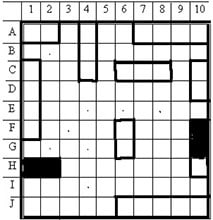 The adjective naval , which comes from the Latin navālis , has two main uses. The first meaning mentioned in the dictionary of the Royal Spanish Academy ( RAE ) refers to that linked to navigation (moving through the water) and ships (boats).
The adjective naval , which comes from the Latin navālis , has two main uses. The first meaning mentioned in the dictionary of the Royal Spanish Academy ( RAE ) refers to that linked to navigation (moving through the water) and ships (boats).
Naval architecture , in this framework, is the set of techniques and knowledge that make the construction of ships possible. These means of transport navigate different bodies of water according to their characteristics, fulfilling multiple functions.
Everything associated with navigation is part of the naval universe. Thanks to experts in naval matters, a ship can leave a port ; navigate an ocean, river, lake or lagoon; and arrive at another port, making the trip safely and efficiently.
Naval can also refer to what is related to the Navy : the naval forces that belong to a State. The port managed and directed by the Navy , which includes various types of logistics facilities, is called a naval base .
A naval tactic , meanwhile, indicates how the vessels that will enter combat should be formed and what movements they should make. This tactic depends on the strategy designed for the squads.
Many institutions that operate under the state orbit have the term naval in their name. In Argentina , to mention one case, there are the Naval Prefecture (a security force that protects the Argentine Sea and inland navigation routes), the Naval Military School (an educational establishment that depends on the Navy ) and the Naval Hospital (designed to the attention of Navy personnel and their families).
This term is found in the name of one of the most popular games of all time, naval battle , which is also known as sinking the fleet , sinking boats or the little boat game . Although there are commercial versions, its main feature is that it only requires two sheets of paper and two pencils to play it, so it is not a luxury item.
 The first time that the naval battle game was marketed in board game format was in 1931, when the American company Milton Bradley launched a version on the market. Over the years, many others emerged, almost all with boards and index cards instead of paper and pencil.
The first time that the naval battle game was marketed in board game format was in 1931, when the American company Milton Bradley launched a version on the market. Over the years, many others emerged, almost all with boards and index cards instead of paper and pencil.
The basic rules of naval battle are as follows:
* Two people must play, each with a sheet or board on which to draw or place their ships;
* The board must be divided into a grid of one hundred squares, organized in ten columns by ten rows. The columns are numbered and the rows are identified with the first letters of the alphabet;
* each player must place a certain number of ships of different extents on the grid ;
* Taking turns, they must try to guess the location of enemy ships, naming one square at a time;
* The first to find them all wins.
Depending on the region, players say different words to indicate a success or failure by their opponent; for example: "touched", when he finds a part of a ship; "water", when he does not find any; "sunk" when it finds all the parts of the same ship or one of those that measure a single square. Some alternatives to “hit” are “touch,” “damaged,” and “impact.”
One of the variants of the naval battle allows each player to try to guess more than one square per turn ; In this case it is possible that there will be a tie, if both finish sinking all other people's ships at the same time. Since it can be played without the need for electrical power, it is ideal for passing time during a power outage.
